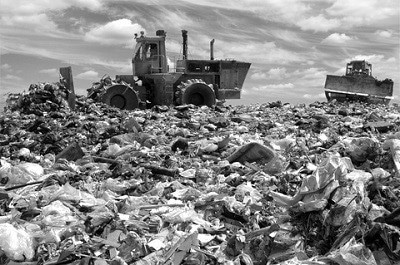Now and then an archeology documentary includes a segment about ancient dump sites. Some are packed with shells and various aquatic remains, while many are full of broken ceramics and bones of domesticated animals. I wonder, did ancient people have garbage collectors? Were old chariots bought for cheap by their sanitation department and used to collect weekly refuse? What about the pre-wheel people? Yeah, they had to walk to their dumps.
I keep hoping for a six-hour Imax about them, those dumps, but I guess it’s not to be. While the Burgess Shale deposit is my first choice for exploration, my close second is where ancient communities discarded their daily waste. (Third is dinosaurs in Montana, fourth is bog bodies in Great Britain, fifth is what Qin had buried around his tomb in China…and my list goes on.) If I can’t crack open slabs of prehistoric ocean floor, then next I’d like to carefully hand-trawl through what my fellow species left behind 5 x 108 years later.
It’s fascinating to ponder that everything I throw away gets buried. Oh I recycle, but not everyplace I lived had that industry, and when I was a kid, the only thing you could return was glass bottles, and that was to get a deposit back. So there’s a lot of my stuff out there in the ground around the world. I try to imagine what it might be like a thousand years from now, or ten times as long, when archeologists find our landfills. The average size of today’s dump is 600 acres, and about 500 feet deep. A large city generates up to 12,000 tons of garbage a day. I’m sure it’ll take the future diggers a lot longer to excavate than the comparatively itty-bitty middens we find today.
Besides broken dishes, aluminum pots warped from flat-top stoves, and computer detritus, I’m curious as to whether they can recover our deoxyribonucleic acid. Probably not from degraded snot wads, but I know for sure that there are clumps of me out there. I don’t know how long modern tape can last, but I imagine it as hi-tech amber, preserving for a least a few thousand years the follicular DNA from my knuckle and arms hairs, and perhaps even a few drops of tears, from when I was outside at Exwork tapping busted bags of dirt and mulch in the wind and lost control of the roll.
I’m all for getting rid of plastic. Mechanisms made of that material are the first things that wear out, like in car door windows, and in the connection from the shifter to the gearbox, both my recent experiences. Mainly I don’t like plastic bottles. They started out thick, but they’re now so thin that researchers say that water molecules can escape, and molecules just as small can get in. Everything should be made of wood, glass, and metal. And all of them have to be versions that are easily recycled. You smart folk need to put some thought into it.
And what’s the big deal about straws? I’ve never liked them. They make me swig my soda too fast, and even when I was a kid I hated the effort it took to drink a thick shake. It felt like I was trying to suck the teeth out of my gums, and the salivary glands below my ears were never happy. Back when I was ten or twelve I started taking the lid off, and after dipping my fries in the chocolate or strawberry ice-creamy goop, I sipped it like from a real glass, then stirred it with the straw until it was melty enough to easily draw through that narrow tube. Later I used a long-handled spoon, eating and stirring and then bottoms up. Still do. I don’t need a straw at all.
What about those cups full of ice for tea and soda? First of all, the lid is there to hide the ratio of beverage to frozen water. Sneaky. But the straw prevents you from getting an avalanche of ice in your face when continually trying to get another last drop. Most effective. I recommend using sippy-lids, like for coffee, but make them out of the same material, paper stiffened with wax or whatever, as long as it’s recyclable or biodegradable, and with a tight enough fit to keep the lid from dislodging when you tilt the cup above the plane of your mouth and the ice suddenly lets go. Both cup and lid should be threaded like a nut and bolt, but requiring only a quarter turn.
I understand that tossing paper and plastic is cheaper than paying a dishwasher (employee, machine, water, heat, and soap) but there must be a cheaper way to save money. I’d love for the future to be mystified by the sudden absence of dumps in our archeological dirt.
Non-related P.S.: Watched the Cricket World Cup final. I haven’t spent that long on the edge of my seat (or in this case, upright in my recliner) since watching the movie Aliens at the theater in Germany in 1987. England won against New Zealand 15-0 to 15-1 in a super over (like overtime). I am hooked.

